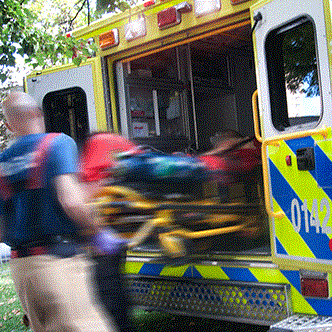
Calling 911 at the first sign of a stroke can be life-saving, but minorities are less likely to seek immediate medical assistance when suffering a stroke, according to research recently published in the Journal of the American Heart Association.
Stroke is a leading cause of death in the United States, accounting for 1 in 20 deaths each year. During a stroke, the blood supply to part of the brain is interrupted, depriving the brain of oxygen and nutrients. That’s why guidelines recommend calling 911 at the first sign of a stroke, as immediate help can minimize brain damage and increase chances of survival. Telltale signs of stroke include trouble speaking or understanding, trouble walking and paralysis in the face, arm or leg.
But not everyone may recognize the symptoms of a stroke or know to call 911. Experts wondered whether certain people were more likely to seek immediate help after a stroke than others.
To learn more, researchers analyzed data from nearly 400,000 stroke patients from 1,613 U.S. hospitals between 2011 and 2014. Data was collected as part of “Get With the Guidelines – Stroke”, a program started in 2003 to improve stroke care in the United States.
Overall, 59% of stroke patients called 911 and were transported to the hospital by ambulance. However, not all patients utilized emergency services in the same way.
Analysis showed that white women were the most likely to call 911 after a stroke, and Hispanic men were the least likely to use emergency services among all stroke patients. Hispanic and Asian adults were 20–29% less likely to call 911 after a stroke than white adults. Black women were 25% less likely to seek emergency medical assistance than white women when suffering a stroke.
Patients experiencing weakness, paralysis, confusion and/or trouble with speech were also more likely to call 911 than patients with other stroke symptoms.
Authors believe that differences in emergency medical use may explain both racial/ethnic and sex disparities related to stroke. Although stroke is a leading cause of death in the United States, certain groups face worse outcomes and survival rates than others. For example, stroke is more fatal in black men and women compared to whites. Minorities also tend to experience more permanent damage from stroke than white stroke survivors.
Study findings may explain some of these disparities, as immediate treatment can often mean the difference between life and death for stroke patients. The longer it takes for an individual to call 911 after a stroke, the worse outcomes will likely be.
If minorities are less likely to seek immediate medical attention at the first signs of stroke, this may explain part of the reason why they face worse outcomes than whites. As authors explain, improving stroke care in these populations is an important step for eliminating health disparities. Through education about stroke symptoms and the importance of calling 911, more patients will ultimately receive the care they need to improve both outcomes and survival rates.